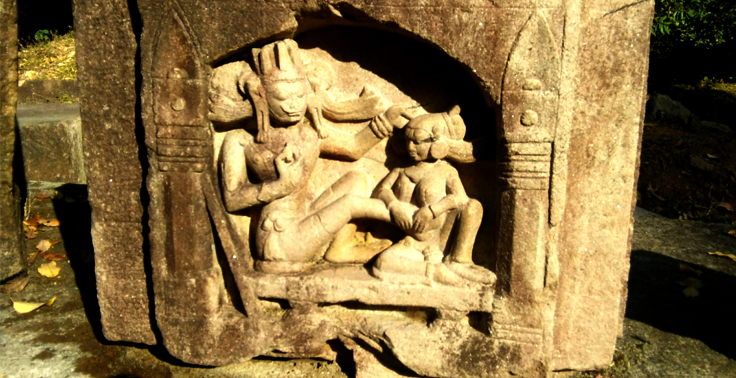By: Sidheswar Kumar Mishra
Founder: Assam Tours & Travels
Northeast India is a hidden paradise for tourists because of its abundance in many travel destinations. Assam is one of the same. Assam is having many archeological sites underdeveloped and some are open for the public too. One of those sites is Deopahar. Situated on the national highway 129 in Numaligarh of Golaghat dist. of Assam. The site is well connected with public transportation.
Deopahar site is situated on the hillock and the area will spellbind any nature and sculptor admirer. The long steep steps of DEOPAHAR ( Deo means God and Pahar means Hills in the Assamese language ) is hiding the beautiful story of 10th-11th AD, is very hard to believe until you climb to its peak. A tough flight of staircase is rewarding once you scale and you will be greeted by the cool calm breeze of fresh air coming from the surrounding lush green tea estates. A sight to cherish about. The panoramic view of this hillock is very soothing to the eyes as it is set amid the greenery of the tea garden on the hillocks and the shade tree in between the tea plants which acts as saviors of tea bushes from the scorching sun during the high temperature of sunlight.
The huge structure of the Deopahar temple narrates the golden history and architecture of its importance. Though it had shredded its hugeness and little remains of the base structure which depicts the belief system that the locals had for Lord Shiva. The legends say that the shivalinga that was worshipped here had to be shifted under known reasons and soon after, the Baba Than temple was established in the 19th century which is situated on the foothills. But the construction atop the hill is what makes it mesmerizing. From the first step to the last step on the hillock, one can find many carved stone sculptors of different shapes & sizes. These statuettes are of different deities, flowers, animals and are believed to be related to the stories of Ramayana and Mahabharata, the two great epics of India, perhaps making it one of its kind in the world where both the epics have been represented together.
A natural phenomenon occurs during the flowering season, Deopahar becomes the home for giant honey bees and the bees built their giant hives on the bhelue tree or the tetramelesnudiflora. Giant honey bees prefers to built hives in open area far off the ground in the forested area. Witnessing giant bee hives are rare. Looking at its hive one can easily guess the size and humming sound.
Very less is known on how the temple has been shredded but it is assumed that the earthquake of 1897 has disturbed this beautiful structure. Still, it has gratifying carvings and the hilltop is full of carved stone sculptures scattered all around. It is a must-visit place for historians, nature admirers, and enthusiastic explorers. It is considerably near to the famous UNESCO world heritage site Kaziranga National Park.
.
